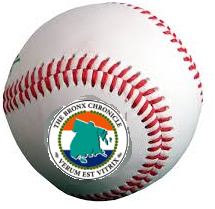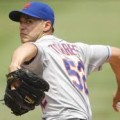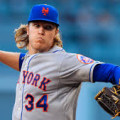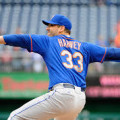By William Copolla
Mets Need Good Harvest On Farm
The talk is he is an average to slightly above average defender, doesn’t strike out a lot and although he makes contact is not projected to hit for power. To me that eliminates third base at the big league level and with the signing of Todd Frazier for the next two years and Amed Rosario the shortstop of the future. Gimenez could become someone who can be included in a trade one day for that missing piece of the puzzle.
But that’s their top two prospects. They don’t have a single prospect in the top 100 in baseball. Rosario and Dominic Smith were the only two in that elite group last year and moving them up to the big leagues has now dropped the Mets to one above the bottom of the farm system rankings. Their division rival Braves have eight players in the top 100 and are ranked as the number one organization in farm systems.
The Phillies have six in the top 100 and listed as Number 6 overall. The Mets need to start finding some diamonds in the rough soon.
Amateur baseball has gotten so competitive today with kids sending ball clubs videos and scheduling work outs with scouts from all teams. There are no secrets anymore out there when it comes to prospects. It has come down to who can draft the best and some clubs are better at it than others. Scouts have to make a good case to their scouting director and cross checkers to get their prospect picked.
Pool money and where they slot a player becomes as complicated as any Wall Street or mega corporate decision made today.
Teams are finding it easier to build a strong minor league system today through the use of trades. They like the fact that if they can trade one quality major leaguer and get three top prospects in return, they can change the future of their organization faster. In essence they are using the scouting skills of another club to find prospects. Mind you that their own pro scouts are out there everyday watching and evaluating the minor leagues of targeted teams who may need that one guy you have who can bring them a championship.
The major league scouts are the ones who study what team needs a player at what position. Major league scouts usually cover two teams and who ever they play in a series.
The whole process is like a well choreographed dance. We have seen the Yankees execute this new process of acquiring young prospects to almost perfection. The Braves, and White Sox have also gone this route in a positive way and that doesn’t mean teams can’t do it without mega trades. The Astros and Dodgers have built from within to great success.
No matter how a team builds, it requires a great deal of knowledge and a little bit of luck. Jim Thome was picked in the 13th round by Cleveland in 1989 and is headed to the Hall of Fame. The Astros drafted Mark Appel number one overall in 2013 and after only five years he is out of baseball, never getting any higher than AAA ball.
The Mets have quality people in their scouting and player development departments. Maybe it’s time to rub uncle Leo’s bald head for some luck.
William Coppola is a contributing sports columnist for the Bronx Chronicle with 40 years in the game of baseball as a player, coach, umpire and advanced scout.

















Follow Us